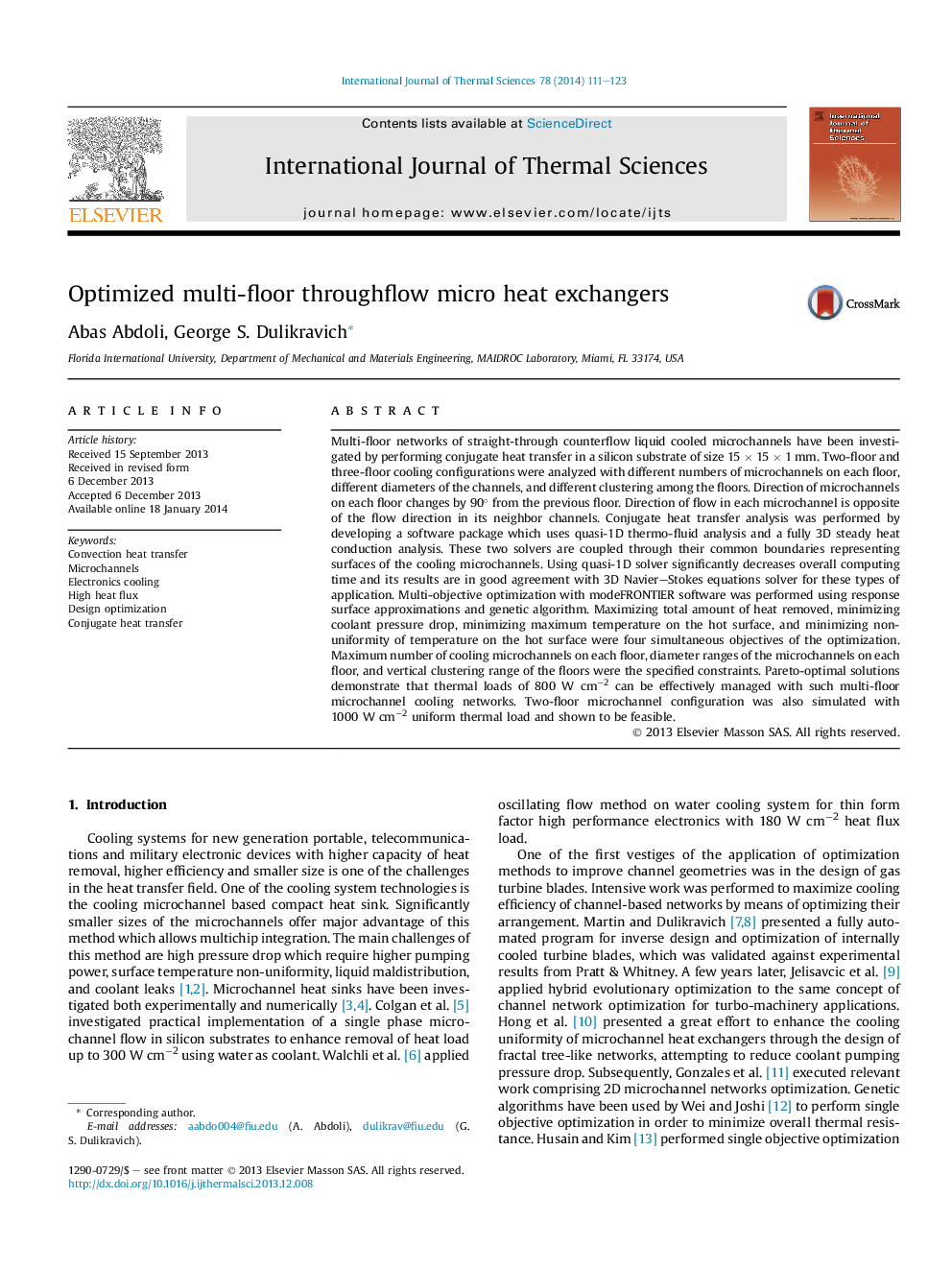| Article ID | Journal | Published Year | Pages | File Type |
|---|---|---|---|---|
| 668399 | International Journal of Thermal Sciences | 2014 | 13 Pages |
Abstract
Multi-floor networks of straight-through counterflow liquid cooled microchannels have been investigated by performing conjugate heat transfer in a silicon substrate of size 15 Ã 15 Ã 1 mm. Two-floor and three-floor cooling configurations were analyzed with different numbers of microchannels on each floor, different diameters of the channels, and different clustering among the floors. Direction of microchannels on each floor changes by 90° from the previous floor. Direction of flow in each microchannel is opposite of the flow direction in its neighbor channels. Conjugate heat transfer analysis was performed by developing a software package which uses quasi-1D thermo-fluid analysis and a fully 3D steady heat conduction analysis. These two solvers are coupled through their common boundaries representing surfaces of the cooling microchannels. Using quasi-1D solver significantly decreases overall computing time and its results are in good agreement with 3D Navier-Stokes equations solver for these types of application. Multi-objective optimization with modeFRONTIER software was performed using response surface approximations and genetic algorithm. Maximizing total amount of heat removed, minimizing coolant pressure drop, minimizing maximum temperature on the hot surface, and minimizing non-uniformity of temperature on the hot surface were four simultaneous objectives of the optimization. Maximum number of cooling microchannels on each floor, diameter ranges of the microchannels on each floor, and vertical clustering range of the floors were the specified constraints. Pareto-optimal solutions demonstrate that thermal loads of 800 W cmâ2 can be effectively managed with such multi-floor microchannel cooling networks. Two-floor microchannel configuration was also simulated with 1000 W cmâ2 uniform thermal load and shown to be feasible.
Keywords
Related Topics
Physical Sciences and Engineering
Chemical Engineering
Fluid Flow and Transfer Processes
Authors
Abas Abdoli, George S. Dulikravich,
